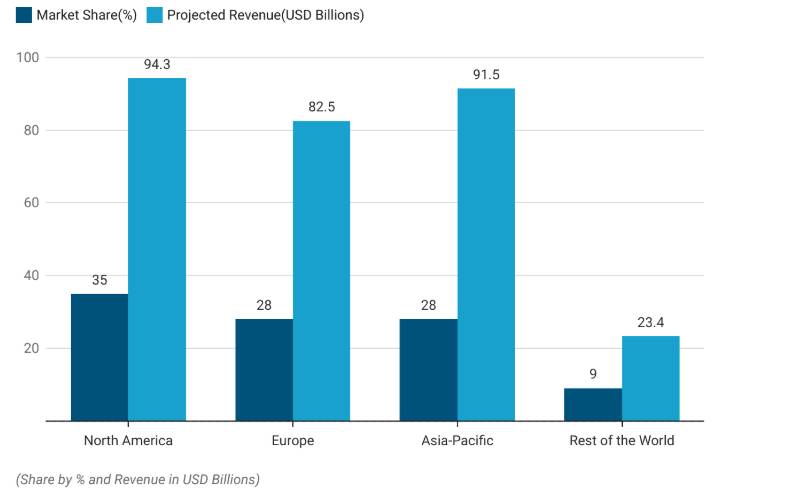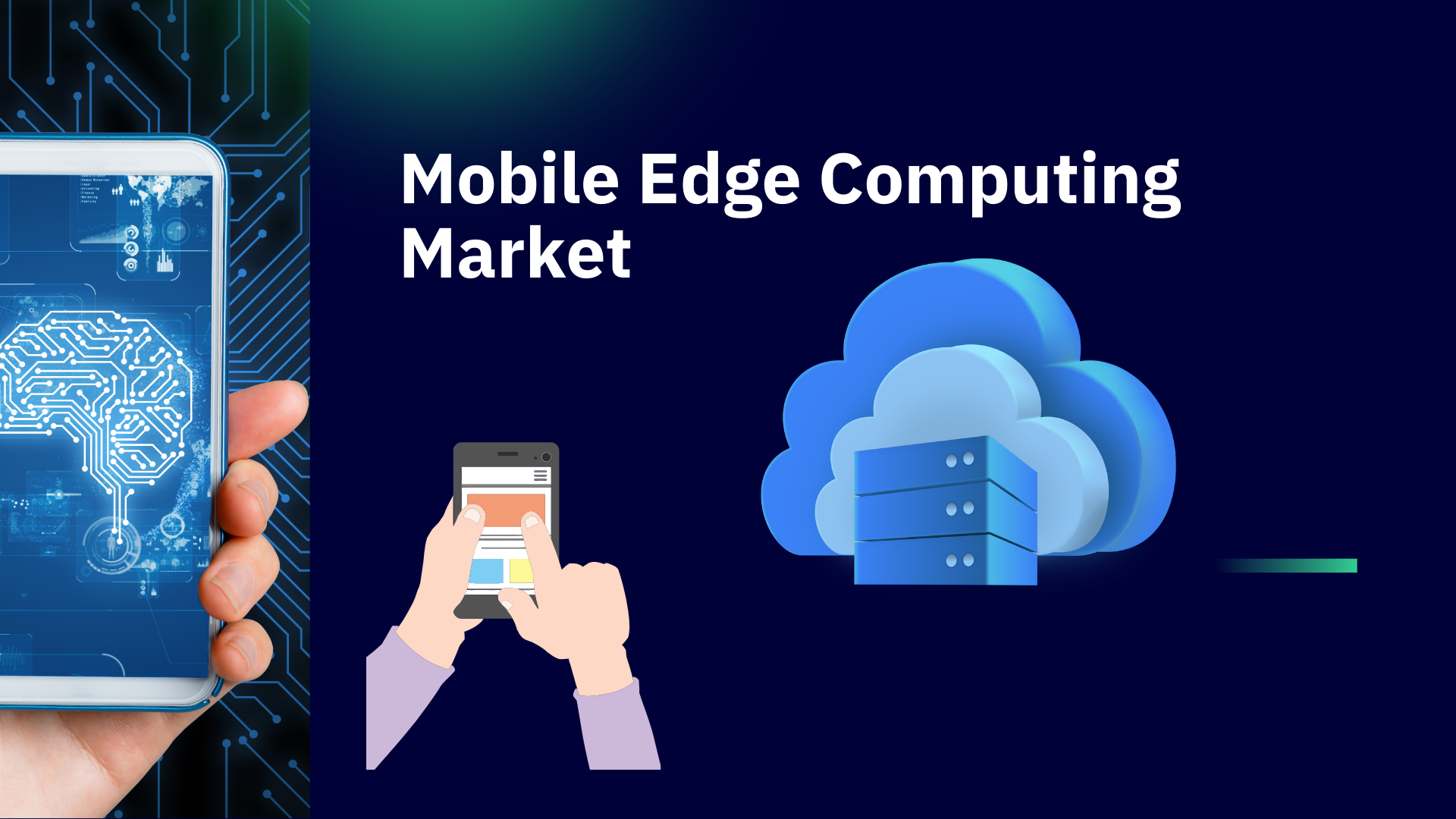Table of Contents
Introduction
According to a Market.us report, the global Mobile Edge Computing (MEC) market is set for significant growth. The market size is projected to rise from USD 875.0 million in 2023 to approximately USD 12,534.7 million by 2033, reflecting an impressive CAGR of 30.5% over the forecast period (2024–2033).
Mobile Edge Computing (MEC) is a cutting-edge network technology that transforms data processing by moving computational tasks from centralized data centers to the network’s edge. This innovation delivers real-time, high-speed, and low-latency access, bringing faster and more efficient bandwidth closer to mobile users. Designed to meet the rising demand for better coverage and seamless connectivity, MEC enhances user experience while optimizing network performance.
The demand for mobile edge computing (MEC) is rising rapidly, driven by the need for fast, local data processing. Industries that rely on real-time insights—such as autonomous vehicles, IoT, and smart cities—are fueling this growth. By handling data closer to its source, MEC minimizes delays and reduces reliance on distant servers, improving application performance and user experience.
MEC is gaining traction as a solution that enhances edge devices by bringing computing and storage closer to where they are needed. Its adoption is driven by advancements in 5G, which are essential for managing growing data volumes and enabling ultra-reliable, low-latency communication for modern applications. As industries accelerate digital transformation, MEC’s role in next-generation networks is set to expand, reinforcing its importance in the evolving tech landscape.

Innovations in Mobile Edge Computing (MEC) are rapidly evolving to meet the diverse needs of various industries. Advances in AI and machine learning, specifically optimized for edge computing, are improving real-time decision-making. At the same time, enhanced energy efficiency and stronger security protocols are making MEC solutions more reliable and adaptable to complex networks.
As the MEC market expands, it is becoming a key component of technology strategies across multiple sectors. The rise of IoT devices and the growth of 5G infrastructure are unlocking new opportunities in healthcare, retail, and manufacturing. This expansion is not only global but also broadening in application, driving deeper integration of edge computing into industrial operations worldwide.
Key Takeaways
- Hardware Bearing held a dominant market position in the component segment of the Mobile Edge Computing Market in 2023, capturing more than 61.5% share.
- In the By Industry Vertical segment of the Mobile Edge Computing Market, IT & Telecom held a leading position in 2023, securing more than 23.4% share.
- North America dominated the Mobile Edge Computing Market in 2023, with a 36.7% market share and generating USD 321.12 Million in revenue.
Mobile Edge Computing Statistics
- In March 2023, AT&T partnered with the Cherokee Nation to build a new cell tower in Kenwood, Oklahoma, enhancing the town’s 5G network. This upgrade provides the 1,000 residents with fast, reliable, and secure connectivity.
- In 2020, plans were set for the launch of 12 MEC data centers, with the introduction of an open MEC platform in March designed to reduce 5G latency by up to 60%, according to STL Partners.
- The global edge computing market is on a trajectory of substantial growth, with projections estimating its value to skyrocket to approximately $206 billion by the year 2032. This marks a significant increase from its $47 billion valuation in 2023, yielding an annual growth rate of 18.3% over the nine-year period.
- Enterprises are gearing up to invest heavily in edge cloud computing, dedicating about 30% of their IT budgets to this technology over the next three years. This information comes from a 2019 report by Analysys Mason, titled “Strategies for Success at the Edge.”
- By 2030, North America, Europe, and East Asia are expected to dominate the market, generating 88% of the revenue from edge services.
- China is set to play a major role in the network edge landscape, hosting 26% of global network edge sites by 2026.
- The number of network edge data centres is also expected to grow, reaching just shy of 1,200 by the year 2026.
- Telecommunication companies are anticipated to increase their spending significantly, with an annual expenditure projected to hit $11.6 billion by 2027.
- A notable 41% of telecommunications operators view the network edge as the prime area for collaboration with hyperscale cloud service providers.
- Focusing on industry specifics, the media, transport, and manufacturing sectors are projected to make up 84% of the edge market by 2030.
- In Europe, the edge computing market is anticipated to continue its robust expansion, with a predicted market value of $82.5 billion by 2025.
- Similar growth is expected in the Asia-Pacific region, where the edge computing market is forecasted to reach $91.5 billion by 2025.

Source : Scoop.market.us
Applications of Edge Computing Statistics
- The edge computing market is rapidly expanding, with various industries leveraging its capabilities to improve efficiency and innovation. Among the sectors utilizing this technology, the Industrial Internet of Things (IoT) dominates the market, accounting for 30% of the share. In industrial and manufacturing environments, edge computing plays a crucial role in enabling real-time data analysis and predictive maintenance, helping businesses optimize operations and reduce downtime.
- Smart cities are also making significant strides with edge computing, capturing 23% of the market. By using edge technology, urban areas can improve traffic management, enhance public services, and streamline various city operations, all with minimal delays. The ability to process data at the edge of the network allows cities to respond quickly to dynamic situations, improving the quality of life for their residents.
- Content delivery networks follow closely behind, with 17% of the market share. Edge computing helps in reducing latency when delivering multimedia content like videos, games, and streaming services, ensuring a smooth and uninterrupted experience for users across the globe.
- In the Remote Monitoring space, edge computing is used for real-time tracking of assets, infrastructure, and even healthcare devices, capturing 15% of the market. The ability to process and analyze data locally allows businesses to make faster decisions and react quickly to any issues that arise, from monitoring critical infrastructure to patient care.
- Applications in Augmented Reality (AR) and Virtual Reality (VR) hold 11% of the market, benefiting greatly from the low-latency capabilities of edge computing. This technology enhances immersive experiences by reducing delays, making AR and VR applications more seamless and interactive for users.
- The remaining 4% of the market is composed of various other applications, further demonstrating the versatility of edge computing across industries. As the technology continues to evolve, its role in driving innovation and operational efficiency is expected to grow even further, touching almost every aspect of the digital landscape.
Emerging Trends
- Integration with 5G Networks: MEC is being combined with 5G technology to provide faster and more reliable services. This combination supports applications that need quick responses, like autonomous vehicles and smart cities.
- Support for IoT and AI Applications: By processing data near its source, MEC reduces delays and improves responsiveness, which is essential for technologies like the Internet of Things (IoT) and Artificial Intelligence (AI). This local processing enables real-time data analysis and decision-making critical for IoT devices and AI applications.
- Enhanced Security Measures: Processing data locally with MEC improves security by reducing the need to transmit sensitive information over long distances. This approach minimizes exposure to potential security threats during data transmission, enhancing the overall protection of sensitive information.
- Growth in Edge AI: There’s a shift towards running AI applications directly on edge devices, known as Edge AI. This approach offers benefits like real-time responses and enhanced privacy, as data is processed locally rather than in centralized data centers.
- Expansion Across Industries: Various sectors, including healthcare and manufacturing, are adopting MEC to improve efficiency and performance. For example, in healthcare, MEC enables real-time patient monitoring and faster data analysis, leading to better patient outcomes.
Top Use Cases
- Autonomous Vehicles: MEC enables self-driving cars to process data in real-time, improving navigation and safety by reducing delays.
- Augmented and Virtual Reality (AR/VR): By minimizing latency, MEC enhances AR and VR experiences, making them more responsive and immersive.
- Healthcare: MEC supports real-time patient monitoring and remote surgeries by providing immediate data processing, which is crucial for timely medical interventions.
- Smart Cities and IoT: In smart city infrastructures, MEC processes data from numerous IoT devices locally, facilitating efficient traffic management, environmental monitoring, and public safety measures.
- Industrial Automation: MEC allows factories to monitor and control machinery in real-time, enhancing production efficiency and enabling predictive maintenance.
Major Challenges
- Resource Management: Effectively allocating limited computing and storage resources at the edge is complex. Balancing these resources among numerous users and applications requires careful planning.
- Security and Privacy: Processing data closer to users can expose sensitive information to potential threats. Ensuring data protection and user privacy is essential.
- Scalability: As the number of connected devices grows, scaling MEC solutions to accommodate increased demand becomes challenging. Managing diverse devices with varying capabilities adds to this complexity.
- Reliability: Maintaining consistent and dependable services at the edge is difficult due to potential network disruptions and hardware failures. Implementing robust failover mechanisms is necessary to ensure service continuity.
- Interoperability: Integrating MEC with existing network infrastructures and diverse technologies requires seamless compatibility. Achieving this interoperability is vital for widespread adoption.
Market Opportunities
- Integration with 5G Networks: The combination of MEC and 5G technology allows data to be processed closer to users, resulting in quicker response times. This integration supports applications that require real-time interactions, such as augmented reality and autonomous vehicles.
- Advancements in Artificial Intelligence (AI): Deploying AI at the edge enables devices to process data locally, enhancing real-time decision-making capabilities. This development is crucial for applications like image and speech recognition, as well as autonomous systems.
- Enhanced Security and Privacy Measures: With the increase in edge devices, there is a growing focus on implementing robust security protocols. This includes secure communication methods and AI-driven threat detection systems to protect user data effectively.
- Adoption of Edge Containers: The use of containerization technology at the edge allows applications to run consistently across various environments. This flexibility is essential for accommodating diverse hardware and connectivity constraints, promoting a more agile infrastructure.
- Development of Micro Data Centers: The rise of micro data centers addresses the need for localized processing and storage. These compact, decentralized centers reduce latency and improve the efficiency of edge systems, supporting the growth of edge computing applications.
Recent Developments
- In February 2023, Nokia and Kyndryl extended their global network and edge partnership by three years, concentrating on delivering LTE and 5G private wireless services and Industry 4.0 solutions to enterprises.
- In February 2024, Nokia, in collaboration with A1 Austria and Microsoft, deployed the industry’s first 5G edge cloud network slicing solution for enterprises, enabling secure and high-performing virtual private network services integrated with edge cloud applications.
- In October 2024, Advantech announced upgrades to its industrial computing platforms, including motherboards and IPC systems, integrating the latest 14th Gen Intel® Core™ processors. These enhancements aim to boost computing performance by up to 23%, catering to applications in smart factories and edge AI.
Conclusion
In conclusion, the Mobile Edge Computing (MEC) market is rapidly growing as it enables low-latency processing of data closer to the end user, improving the performance of mobile applications and services. MEC supports key technologies like 5G, IoT, and artificial intelligence, offering substantial benefits in industries such as healthcare, automotive, and entertainment by enhancing real-time data processing, reducing network congestion, and optimizing bandwidth usage.
With increasing demand for faster, more reliable mobile experiences, the market is expected to expand significantly in the coming years, driven by the proliferation of connected devices, the need for improved network efficiency, and advancements in edge-based infrastructure. Thus, MEC represents a transformative shift in mobile networking, providing critical solutions for both consumers and enterprises, thus fueling the next generation of digital innovation.
